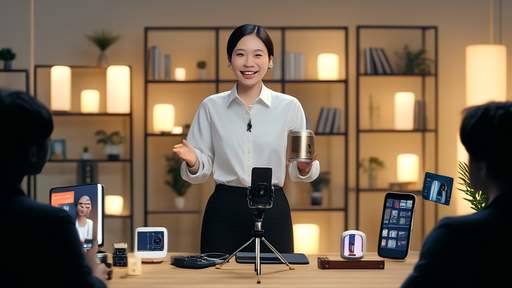The world of marketing is undergoing a quiet revolution—one that engages consumers not through loud advertisements or flashy banners, but through the subtle orchestration of sensory experiences. Sensory marketing, particularly its cross-modal applications, is redefining how brands connect with audiences on a deeper, almost primal level. By weaving together sight, sound, touch, taste, and smell, companies are crafting immersive narratives that linger in memory far longer than any slogan ever could.
At its core, cross-modal sensory design is about harmony. It’s the art of ensuring that the crunch of a potato chip aligns perfectly with its salty taste, or that the weight of a luxury car’s door closing resonates with the smoothness of its leather seats. These aren’t accidents; they’re meticulously engineered moments designed to evoke emotion and foster brand loyalty. Research suggests that multisensory cues can enhance recall by up to 70%, turning mundane interactions into unforgettable encounters.
The power of scent exemplifies this phenomenon. Walk past a bakery, and the aroma of freshly baked bread doesn’t just tempt your nose—it triggers a cascade of associations: warmth, comfort, perhaps even childhood memories. Brands like Singapore Airlines have capitalized on this by infusing their cabins with a signature floral fragrance, creating an olfactory identity as distinct as their logo. Similarly, Abercrombie & Fitch’s heavy use of musky cologne in stores became so iconic it shaped the brand’s youthful, energetic persona.
Sound, too, plays a pivotal role. Intel’s four-note jingle is instantly recognizable even without visuals, while the “click-clack” of a mechanical keyboard satisfies users on a tactile and auditory level. These sonic logos or “earcons” aren’t mere background noise; they’re psychological anchors. Studies show that congruent sounds (like sizzling paired with cooking) can make food taste 10% more flavorful, proving that our senses are inextricably linked.
Visual elements, of course, remain foundational—but their impact multiplies when paired with other stimuli. Tiffany & Co.’s robin’s-egg blue boxes gain potency because they’re often accompanied by the rustle of satin ribbons and the weightiness of the package itself. This trifecta signals luxury before the jewelry is even seen. Even in digital spaces, animations synchronized with haptic feedback (like a phone’s vibration when refreshing a page) create illusions of physical interaction.
Perhaps the most underrated frontier is touch. Texture influences perception more than we realize; rough surfaces make challenges seem harder, while smooth materials promote feelings of ease. Apple’s obsession with unboxing experiences—where every peel of protective film and fold of tissue paper feels deliberate—transforms product launches into rituals. Meanwhile, Lush Cosmetics encourages customers to squeeze their bath bombs, knowing that tactile engagement increases purchase intent by nearly 30%.
What makes cross-modal design truly groundbreaking is its ability to transcend cultural and linguistic barriers. A smile’s warmth or chocolate’s melt-in-your-mouth sensation requires no translation. As global markets become more crowded, these universal sensory languages offer brands a rare advantage: the capacity to communicate directly with consumers’ emotions, bypassing rational skepticism altogether.
Yet for all its potential, sensory marketing demands restraint. Overstimulation can backfire—imagine a store blaring music, pumping overpowering scents, and flashing strobe lights simultaneously. The magic lies in balance, in knowing which senses to amplify and when to let silence speak. Like a master chef seasoning a dish, the goal isn’t to overwhelm but to elevate each element so the whole becomes greater than the sum of its parts.
As technology advances, so too will these techniques. Virtual reality already combines 3D visuals with spatial audio, while nascent “digital scent” devices hint at a future where online shopping includes perfume samples released on command. But regardless of the tools, the principle remains: humans aren’t just thinking machines—we’re feeling creatures. And the brands that speak to our senses will always have the loudest voice in the room.

By /Jun 3, 2025

By /Jun 3, 2025

By /Jun 3, 2025

By /Jun 3, 2025

By /Jun 3, 2025

By /Jun 3, 2025

By /Jun 3, 2025

By /Jun 3, 2025

By /Jun 3, 2025

By /Jun 3, 2025

By /Jun 3, 2025

By /Jun 3, 2025

By /Jun 3, 2025

By /Jun 3, 2025

By /Jun 3, 2025

By /Jun 3, 2025

By /Jun 3, 2025

By /Jun 3, 2025

By /Jun 3, 2025

By /Jun 3, 2025